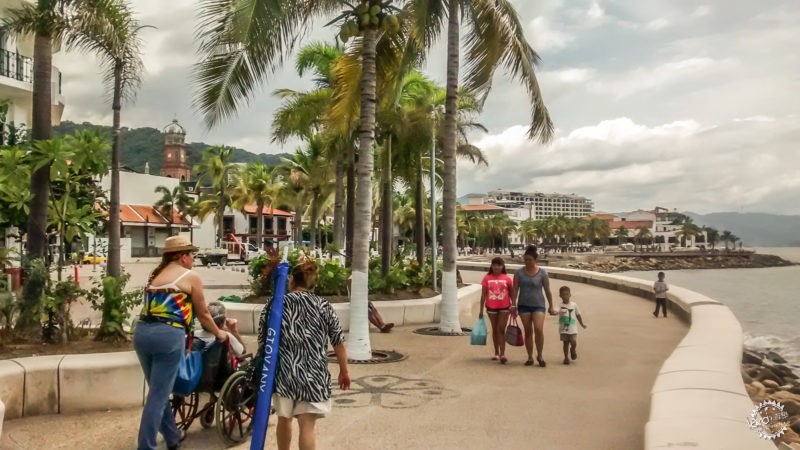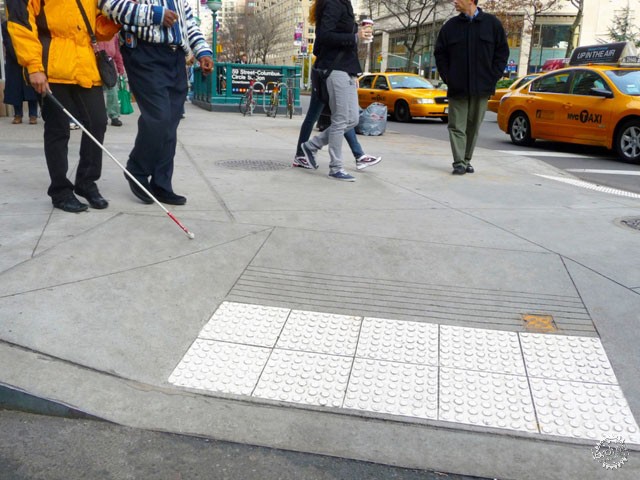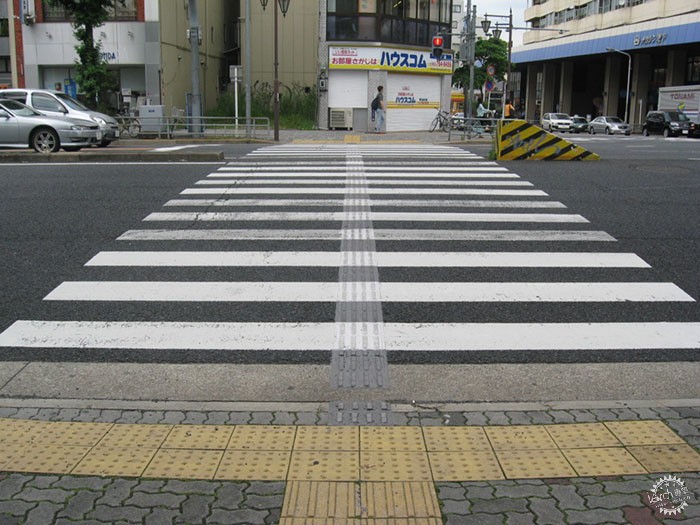
景观对于残障人士来说意味着什么?
What Roles Can Landscape Architecture Play for Physically Challenged People?
由专筑网孙佳,李韧编译
文章来源:Farah Afza Jurekh。在本文中,我们着眼于基本的通用设计。景观设计师们常常考虑通用的可行性。然而,除了具有声音提示的人行横道等基本功能元素之外,很少会有景观设计要素专门服务于残障人士。但景观设计仍然需要为残障人士带来便捷,从而确保他们能够更加适应当下环境。当视障人士与外界人员交谈时,他们的手脚会成为他们的眼睛。他们用脚来获取地面信息,用手指来识别纹理、形状和位置,同时,也依靠其他感觉器官来弥补他们的视力不足,他们的听觉、嗅觉、味觉、触觉和感觉能力比平常人更灵敏。通过改变景观的某些方面,所有的残障人士都可以对周围环境有更强的感知。强调非视觉体验的场所可以通过创建替代提示物,为他们带来空间识别系统,从而培养身体和心理的安全感。 触觉表面的肌理对于他们来说也至关重要,例如街道的盲道,残障人士可以通过双脚或是拐杖进行感知。此外,地面的变化也可通过一定的标识进行指示,同时引导他们去往安全地带。
Article by Farah Afza Jurekh In this article we look at the fundamentals of universal design. Universal accessibility is widely considered by landscape architects. However, beyond functional elements such as crosswalks with sound cues, there are very few landscapes that are designed to engage the senses and provide benefits to the visually impaired. Landscape design principles offer an array of opportunities to the people who are visually impaired and physically challenged to ensure their ease in movement and comfort.Visually Impaired People When visually impaired people negotiate with the outside world, their hands and feet become their eyes. They use their feet to acquire surface information and fingers to recognize texture, form, and location. Additionally, the blind rely on other sensory organs to compensate for their lack of sight and their ability to hear, smell, taste, touch, and feel is more subtle than people with sight. By manipulating certain aspects of the landscape, a person who is visually impaired or physically challenged could have an enhanced perception of the surrounding environment. Sites that accentuate non-visual experiences can foster feelings of security, both physical and psychological, by creating alternative prompts and allowing them to navigate and identify spaces that may not be familiar. Importance of Tactile Surfaces Especially for Physically Challenged People Texture Texture, for this purpose, refers to ground surfaces, which can be used to denote footpaths for visually impaired people through their sense of touch. They are detected either underfoot or via a walking cane. Furthermore, changes in ground surface can be used to indicate an approaching hazardous area, such as a road or signal crossing, and show the correct direction to proceed.

纽约交通繁忙区域的ADA色彩对比装置/ADA compliant color contrast detectable warning installation on a high traffic area in New York City. Credit: CC BY 3.0
路边坡道的设计应根据当地设计规范。这对于街道和人行道之间水平变化的轮椅使用者来说至关重要。在一些国家,这些道路配备了音频系统,当轮椅通过时会发出警告声。不同的纹理可以表达不同的信息,以及相关设施的定位,如楼梯、电话亭、长椅等。因此,肌理的变化也能够提醒使用者场地的改变。
Curb Ramps (Especially for Wheelchair Users) The slope, or the gradient of a ramp, should be designed to local guidelines. This is essential for wheelchair users where there are level changes between streets and sidewalks. In some countries, these curbs are equipped with audio systems that emit a warning sound when they are crossing roads. Varying Textures Can be a Key Design Tool Tactile paving surfaces can also be used to convey critical information about the location of amenities such as stairs, telephone booths, benches, etc. In this case, changing texture is used to stimulate their attention.

日本繁忙的行人通道安装了定向触觉标记/Low profile directional tactile markings are installed on busy pedestrian crossings in Japan. Credit: CC BY-SA 3.0
生活纹理也是增强视障人士体验的另一种方式,它指的是植物和树木的触觉,另外,气味也起到了一定的作用。灌木、鸟类的气味和声音可以帮助视障人士识别方向,随着越来越多的灌木的种植,也会引发鸟类的聚集。诸如荚蓬植物、美洲冬青、白浆果等常见植物则推荐使用。而气味植物的种植则需要因地制宜,应根据对该地区气候条件的敏感程度来选择品种,普遍的种类有樱桃李、枫树、杏黄色郁金香、海芋等。气味和声音能够有效地帮助视障人士。这些植物不仅具有美化效果,芳香植物、树木和灌木所产生的微妙声音也能够帮助视障人士分辨方向,让他们对周围环境作出正确判断。
Living Textures Living textures are another way to enhance the experience for the visually impaired. Living textures refer to the feel of plants and trees. Apart from the feel, the fragrance can also be of assistance.Shrubs The chirping of birds can help the visually impaired identify places. With the use of more shrubs, more birds may be invited to flock around. A few recommended species include arrowwood, winterberry holly, and common snowberry. Scented Plants Although these are only a few common examples, the choice of trees and plant species vary by region. Species should be selected based on their hardiness to the region’s climatic conditions. Examples include cherry plum, maple, tulip apricot beauty, and Arum maackia. Smell and sound also help visually impaired people. In addition to the aesthetic enrichment these plants provide, fragrant plants and the sound produced from the movement of trees and shrubs may aid the visually impaired, providing them with a reference to make judgments about their surroundings.

Brickell车站的未来发展策略/The future approach to Brickell Station along Miami’s Underline. Credit: James Corner Field Operations, courtesy Friends of the Underline
特殊纹理可用作地标或触觉提示。垂直元素(如具有粗糙表面的墙壁)和其他景观元素(如雕像和地标)可向视障人士传达触摸信息。嘈杂的水声可以帮助他们识别方位,也能让他们感知水的存在。景观设计师喜欢将水融入他们的设计中,因为这不仅提供冷却效果,还可以营造充满活力的氛围。同样,喷泉的使用和洒水的声音可以帮助视障人士通过聆听来识别场所。使用标牌和互动艺术品标志是城市设计的重要组成部分。标志和标牌以及互动艺术品的易读性可以为残障人士提供表面触觉。因此在设计中,设计师可以充分考虑运用不同的纹理路面、芳香树木和植物、街道设施和水系统。这些是景观设计师可以采用的一些元素,从而更好地帮助残障人士。这些想法是否对您有帮助?请分享您的景观设计新想法。
特色图片:MalecónWalk|墨西哥,巴亚尔塔港|West 8|2011
Special Texture Can be Used as a Landmark or Tactile Cue Vertical elements like walls with rough surfaces and other landscape elements such as statues and landmarks may convey information to the visually impaired through touch. Splashing Water Amidst Noisy Distractions Can Help Them Identify Places Another feature that can be used to trigger one’s sensory perception is water. Landscape architects love incorporating water into their designs. It not only provides a cooling effect, but can also create a vibrant ambience. Similarly, the use of fountains and the sound of splashing water can support the visually impaired to recognize places through listening. The Use of Legible Signage and Interactive Artwork Signs and signage are important components in urban design. The legibility of signs and signage and interactive artwork can provide the physically impaired with tactile surfaces, which can be perceived by touch. Next time you’re tasked with a universal design project, consider implementing different textured pavements, fragrant trees and plants, street furniture, and splashing water. These are just a few examples that landscape architects can employ to allow the visually impaired and physically challenged to move independently at ease. Do you think these ideas help? Please share your thoughts on how landscape architects can improve universal design. — Featured image: Malecón Walk | Puerto Vallarta, Mexico | West 8 | 2011
|
|
